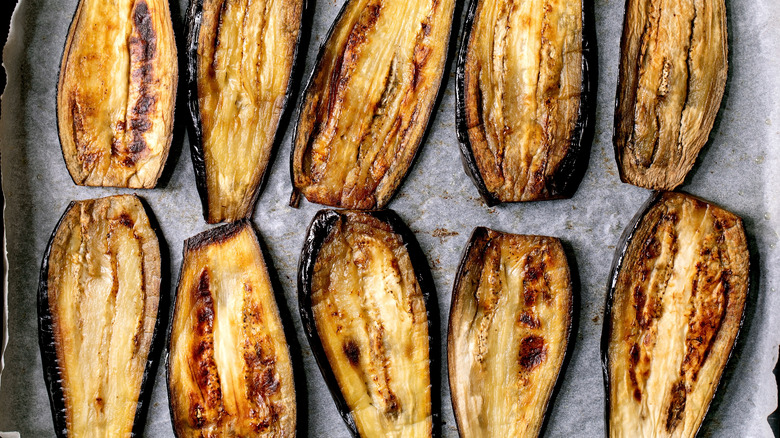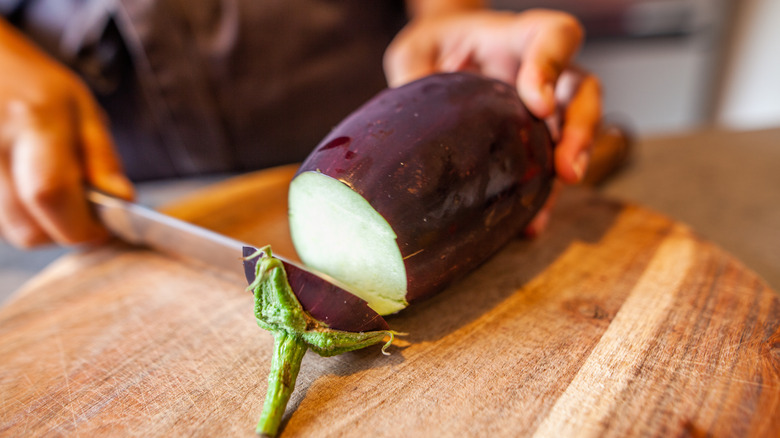Achieve Perfect Eggplant Texture With These Ottolenghi-Approved Roasting Tips
Eggplant is one of the most difficult vegetables to make taste good. Its nightshade family members, bell pepper and tomato, are so much easier to transform into a tasty tomato sauce or dip. Something about the dark purple skin, bulbous shape, and bitter, spongy texture make eggplant so intimidating; even its name is seemingly illogical. The best thing to do when working with finicky ingredients is to turn to professionals — like professional chef Yotam Ottolenghi. The Israeli-born, British-raised chef compiles his Middle Eastern cooking knowledge into bestselling cookbooks, which thankfully include a lot of eggplant recipes.
If you want to avoid the extra steps normally associated with eggplant — it is normally brined, rinsed, and patted dry to assist in removing the bitterness — try a simple roasting technique from Chef Ottolenghi. Cut eggplant into thick rounds, generously brush each side with oil, lightly salt the rounds, and stick them into a hot oven set at 450 degrees Fahrenheit. After roasting for about 30 minutes, you'll achieve the ideal eggplant texture: soft and creamy in the center, but crispy and brown on the outside.
The high heat is key here. A low to medium heat may break down some of the air pockets, which give eggplant its spongy texture, but a hit of high heat helps to collapse the internal structure, leading to a creamier interior. Another tip for roasting eggplant in the oven, particularly with large chunks or whole, is to poke holes in it to ensure the high heat is reaching the center quickly.
Other tips for improving eggplant's texture
Eggplant will absorb a lot of fat if it is fried or cooked in a dish like shrimp stir-fry, due to the abundance of air pockets. Try the classic salting method to avoid greasy eggplant if a recipe calls for a lot of oil or a sauce high in fat. After slicing the eggplant into the desired shape, sprinkle it with salt (table salt is fine for this method) and let it sit for an hour. Before cooking, rinse the salt off with water and pat dry.
Frying slices of eggplant in the pan requires using sufficient oil. With too little oil, the air pockets will remain. Be generous with the oil to break down the air pockets, as well as the heat. Just like roasting eggplant in the oven, cooking it in the pan with high heat is recommended to get rid of the spongy texture.
The application of salt and oil is slightly different when grilling vegetables, but for eggplant, the salting mentioned above can still be followed. Cooking eggplant on the grill naturally provides the high heat, plus the open flame quickens the cooking process and adds a nice char with a smoky flavor. Be sure to brush the eggplant with oil to prevent sticking and avoid a dry texture.

